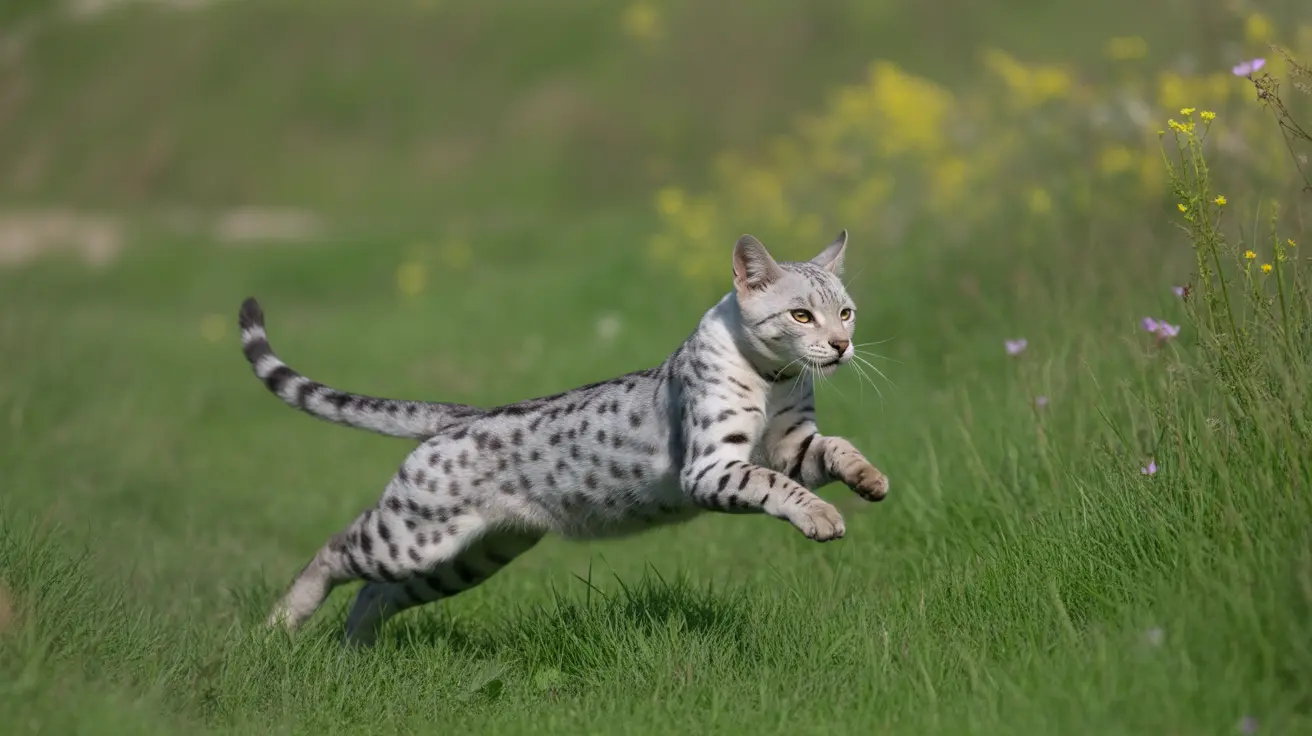Ever watched your cat sprint across the room and marveled at their incredible speed and grace? Cats are natural athletes, equipped with specialized anatomy and remarkable biomechanics that make them exceptional runners. From their flexible spines to their powerful leg muscles, every aspect of a cat's body is designed for swift, agile movement.
In this comprehensive guide, we'll explore the fascinating mechanics behind how cats run, their impressive capabilities, and the evolutionary adaptations that make them such skilled athletes. Whether you're a curious cat owner or a feline enthusiast, understanding these aspects can help you better appreciate your pet's athletic prowess.
The Anatomy of a Cat's Running Ability
At the heart of a cat's running ability lies their remarkably flexible spine. Unlike humans, cats possess elongated vertebrae with numerous articulation points, allowing their spine to compress and extend like a spring during running. This spinal flexibility enables them to maximize their stride length and generate powerful forward momentum.
The cat's muscular system works in perfect harmony with their skeleton. Their powerful hindlimb muscles provide the explosive force needed for acceleration, while their flexible spine allows for rapid posture adjustments during movement.
Running Speed and Performance
Domestic cats are impressive sprinters, capable of reaching speeds between 20-25 miles per hour, with some exceptional individuals hitting up to 30 mph. To put this in perspective, that's faster than Olympic sprinter Usain Bolt at his peak!
However, cats are built for short bursts rather than endurance. They typically maintain these high speeds for only 50-100 meters before needing to rest and recover. This sprint-and-rest pattern aligns perfectly with their natural hunting strategy in the wild.
The Science Behind Cat Movement
When cats run, they employ a unique running technique where both back legs strike the ground simultaneously during full-speed sprints. This synchronized movement maximizes thrust and enables rapid acceleration. Their specialized paw pads contain shock-absorbing adipose compartments that cushion impact during high-speed running and landing.
Cats also demonstrate remarkable efficiency in their movement, using a pendulum-like energy exchange between kinetic and potential energy during walking. This helps reduce muscular effort and conserve energy for those crucial sprinting moments.
Factors Affecting Running Ability
Several factors influence how well a cat can run:
- Age: Cats reach their peak running performance between 2-6 years old
- Breed: Athletic breeds like the Egyptian Mau tend to be faster runners
- Physical condition: Weight, fitness level, and overall health play crucial roles
- Environmental factors: Surface type, temperature, and motivation affect performance
Frequently Asked Questions
How do cats use their flexible spine and leg movement to run so fast?
Cats combine their flexible spine's spring-like action with powerful leg muscles to generate maximum thrust. Their spine compresses and extends during each stride, while their legs work in synchronized pairs to propel them forward efficiently.
What is the typical running speed of a domestic cat and how does it compare to wild cats?
Domestic cats typically run at 20-25 mph, with some reaching 30 mph. While impressive, this is modest compared to wild cats like cheetahs, which can reach speeds up to 75 mph.
Why do cats land so smoothly when running or jumping from high places?
Cats have specialized paw pads with unique adipose compartments that absorb and distribute impact forces. Combined with their flexible spine and excellent balance, this allows them to land smoothly even at high speeds.
How does a cat's gait change when it walks, trots, or runs?
Cats adjust their gait patterns based on speed and situation. They use a stealthy walk for energy efficiency, a trot for moderate speeds, and switch to a full gallop with synchronized leg movements for maximum speed.
What factors affect a cat's running ability, such as age, breed, and health?
A cat's running ability is influenced by age (peak performance at 2-6 years), breed characteristics, overall health, weight, and fitness level. Regular exercise and proper health maintenance are crucial for optimal running performance.
Understanding how cats run not only helps us appreciate their remarkable athletic abilities but also enables us to better care for their physical needs. By maintaining their health and providing appropriate exercise opportunities, we can help our feline friends maintain their natural running abilities throughout their lives.






